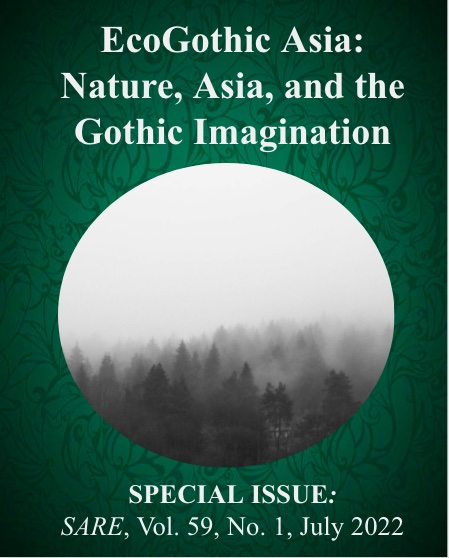“A Perfect Place to Die”: Thinking the EcoGothic, Darkness, and the Dark Sweet in Gus Van Sant’s <i>The Sea of Trees</i>
Main Article Content
Abstract
Located at the foot of Mountain Fuji in Yamanashi Prefecture, Japan’s gothic forest Aokigahara Jukai, is an (in)famous “suicide forest.” Drawing on Timothy Morton’s three threads pertaining to dark ecology and Elizabeth Parker’s notion of “ecoGothic,” both of which open up a more comprehensive perspective of the dark forest, this article argues that the analysis of Van Sant’s film The Sea of Trees (2015) on Aokigahara brings into question the stereotype of the horrible suicide forest for it not only invokes Morton’s sense of (dark-sweet) meditative space for people to ponder the meaning of life but also brings us to recognize the re-enchantment of the Gothic forest where the strangers have been encountered. This article is divided into four parts: (1) Thinking the EcoGothic; (2) Thinking Darkness; (3) Thinking Dark Sweet; and (4) Conclusion. In my reading, Van Sant’s film cautions us against the stigmatization of the Sea of Trees, exclusively challenging anthropocentrism, calls for a more nuanced aesthetic and spiritual perspective about Aokigahara.
Downloads
Article Details

This work is licensed under a Creative Commons Attribution 4.0 International License.
Copyrights of all materials published in SARE are retained by the authors. Authors may republish their work or grant others permission to republish it. We would be grateful if republication is accompanied by an acknowledgment that the work was originally published in SARE.
